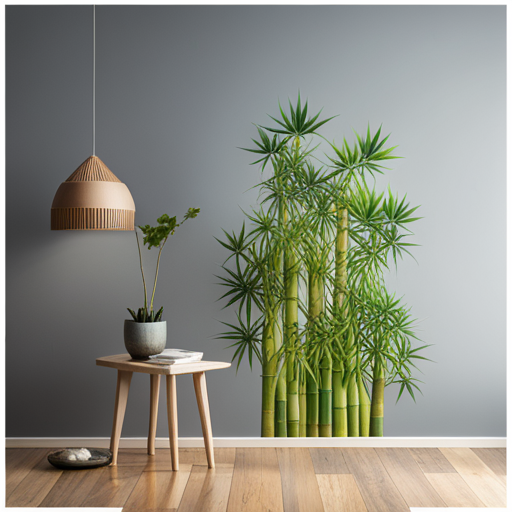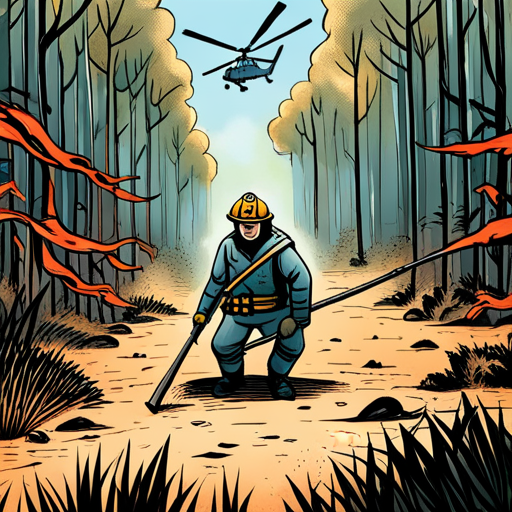Bamboo, a versatile and widely used plant, possesses unique characteristics that make it highly susceptible to wildfires. Its dense foliage, dry and dead leaves, and rough bark contribute to its flammability, making it a significant fire risk, particularly in hot and dry regions.
Bamboo clusters, in particular, tend to accumulate dead material and hinder the removal of dead culms, further enhancing their vulnerability to fires. However, it is important to note that bamboo itself is heat resistant up to 400 degrees and is commonly utilized in home construction. Additionally, bamboo can be treated with specific solutions to enhance its fire resistance.
This article aims to explore the various factors that contribute to bamboo’s flammability and propose effective strategies for fire prevention. By understanding the risks associated with bamboo and implementing appropriate prevention techniques, property owners and land managers can mitigate the potential damage caused by wildfires.
Contents
- 1 Our Highlighted Points
- 2 What is Bamboo?
- 3 Fire Risk Factors
- 4 Prevention Strategies
- 5 Frequently Asked Questions
- 5.1 Can bamboo be used as a natural firebreak to prevent the spread of wildfires?
- 5.2 Are there any specific bamboo species that are less prone to fire than others?
- 5.3 What are some common landscaping mistakes to avoid when planting bamboo?
- 5.4 How can bamboo be effectively used in fire-resistant home construction?
- 5.5 Are there any natural or chemical treatments available to make bamboo more fire-resistant?
Our Highlighted Points
- Bamboo is highly susceptible to wildfires due to factors such as dense foliage, dry and dead leaves, and rough bark.
- Strategies for fire prevention, such as regular maintenance and treating bamboo with fire-resistant solutions, are crucial to mitigate the risk of fire.
- Landscaping techniques like watering and pruning can decrease the risk of fire by preventing the accumulation of dry and dead vegetation.
– Proper maintenance and management of bamboo plants, including removing dead material and creating defensible space, are necessary in fire-prone areas.
What is Bamboo?

Bamboo, a plant known for its flammability, is susceptible to fire in hot and dry environments due to its accumulation of dead material and retention of dry leaves and twigs. Despite its fire-prone nature, bamboo has been widely used as a building material and in traditional crafts. Its remarkable strength and durability make it a popular choice for construction, particularly in areas with high seismic activity.
In traditional crafts, bamboo is used to create various products such as furniture, baskets, and utensils due to its flexibility and aesthetic appeal. However, the fire risk associated with bamboo should not be overlooked, especially in regions prone to wildfires. Strategies for fire prevention, such as regular maintenance and treating bamboo with fire-resistant solutions, are crucial to mitigate the risk of fire and protect properties and structures.
Fire Risk Factors

One important factor to consider when assessing the risk of wildfires is the presence of dry and dead vegetation. During fire seasons, when hot and dry summers and drought conditions increase the risk of wildfires, it is crucial to identify the vegetation that can fuel these fires.
Landscaping techniques play a significant role in reducing fire damage to properties. Regular maintenance, such as watering and pruning, can decrease the risk of fire by preventing the accumulation of dry and dead vegetation.
It is important to note that highly flammable plants, such as bamboo, pose a significant fire risk. Bamboo clusters accumulate dead material and inhibit dead culm removal, making them prone to fire. Additionally, larger bamboo clusters can fuel spreading fires.
Therefore, fire prevention strategies should include proper maintenance and management of bamboo plants in fire-prone areas.
You may also like to read how bamboo charcoal offers a sustainable alternative to wood charcoal.
Prevention Strategies

To mitigate the risk of wildfires, implementing effective vegetation management practices is crucial. Fire resistant treatments can be applied to bamboo to increase its resistance to fire. These treatments involve the use of solutions that penetrate the bamboo and provide a protective barrier against flames.
Effective landscaping strategies can also help reduce the risk of fire. These strategies include removing dead and dry vegetation, creating defensible space around buildings, and using fire-resistant plants in landscaping.
Additionally, regular maintenance of bamboo clusters is essential to decrease the risk of fire. This includes watering the bamboo regularly and pruning dead leaves and twigs.
By implementing these prevention strategies, the potential for fire to spread and cause damage can be significantly reduced.
Frequently Asked Questions
Can bamboo be used as a natural firebreak to prevent the spread of wildfires?
Bamboo can be effective as a natural firebreak in preventing the spread of wildfires. Its dense foliage, rough bark, and ability to withstand high temperatures make it a suitable barrier. Regular maintenance can further enhance its fire prevention capabilities.
Are there any specific bamboo species that are less prone to fire than others?
Fire resistant bamboo species can be cultivated to reduce the risk of fire. However, specific species that are less prone to fire than others have not been identified. Fire prevention techniques such as regular maintenance can still be applied to all bamboo species.
What are some common landscaping mistakes to avoid when planting bamboo?
Common mistakes in bamboo landscaping include planting bamboo without considering its fire-prone nature, neglecting regular maintenance such as watering and pruning, and failing to remove dead culms and dry leaves. Proper bamboo maintenance reduces the risk of fire.
How can bamboo be effectively used in fire-resistant home construction?
Bamboo can be effectively used in fire-resistant home construction through the use of bamboo roofs and insulation. Bamboo is heat resistant up to 400 degrees and can be treated to increase its fire resistance.
Are there any natural or chemical treatments available to make bamboo more fire-resistant?
Fire resistant treatments for bamboo include chemical solutions that increase fire resistance. Additionally, natural firebreaks such as creating defensible spaces, regular maintenance of bamboo clusters, and landscaping strategies can help reduce the risk of fire damage to properties.

